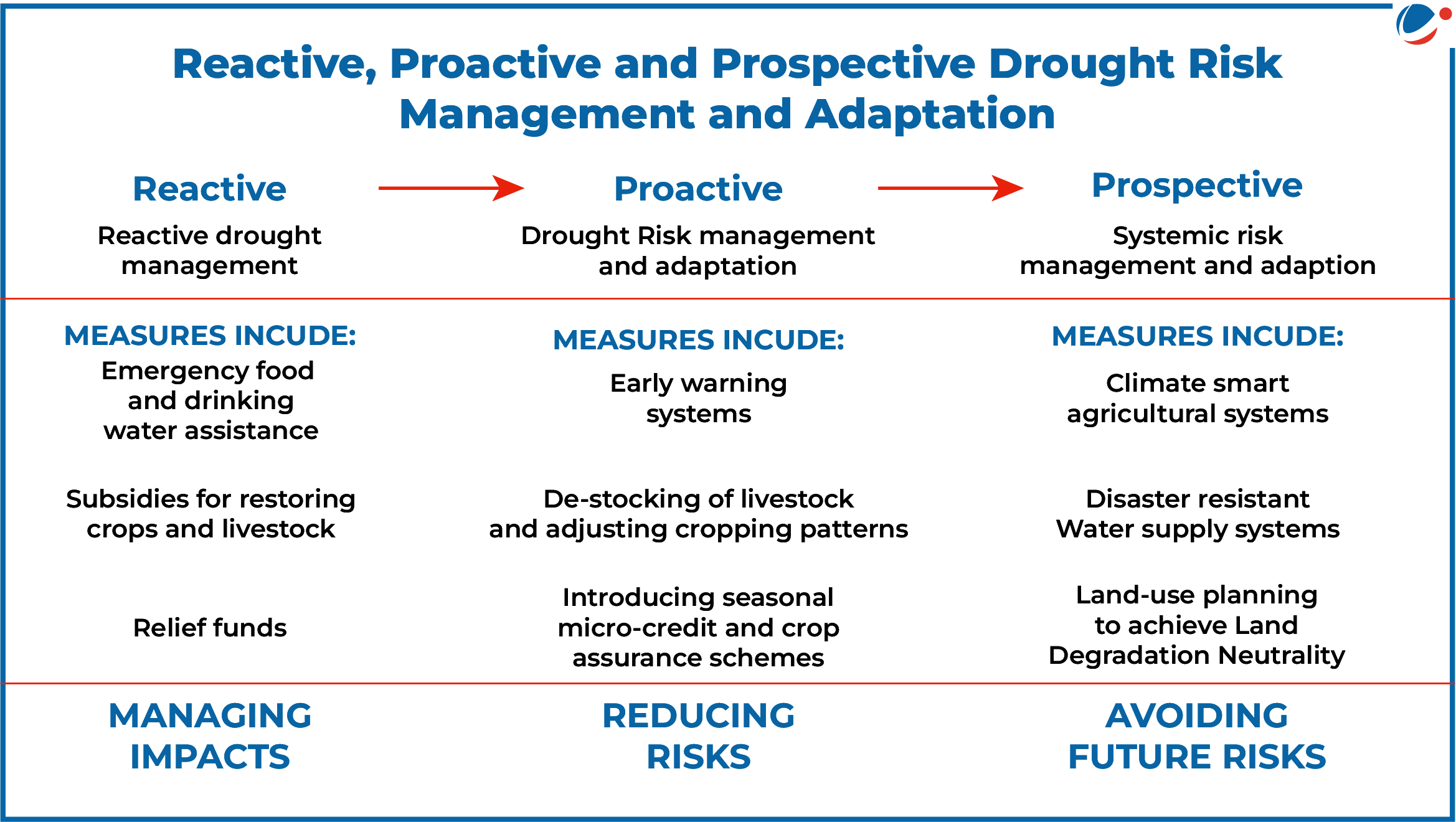It was released during UNCCD's COP16 in Riyadh to raise global ambition and accelerate action on land and drought resilience through a people-centred approach.
- Droughts have increased by 29% since year 2000 due to climate change and unsustainable management of land and water resources.
About Drought
- Defined as prolonged periods of unusually low water availability, leading to an imbalance in water availability, quality and demand.
- Examples of Recent droughts: Great Plains of US, Barcelona in Spain, etc.
- Reasons: Exceptionally low rainfall; Unsustainable water extraction; Strong El-nino, etc.
Impact of Drought
- Water supply: Severe droughts can result in shortages of water supplies, with widespread social and economic consequences.
- Agriculture: Crop failures and reduced yields, leading to food shortages and economic losses.
- Hydropower: Decreased water levels in dams and reservoirs reduce electricity generation can disrupt industrial activities.
- Navigation: Low river levels hinder inland waterway transport, affecting trade and logistics.
- Ecosystems: Loss of biodiversity as aquatic and terrestrial species faces habitat destruction.
Measures taken for Drought management
- Global: Integrated Drought Management Programme; UNCCD’s Drought Resilience, Adaptation and Management Policy (DRAMP) Framework; Global Drought Information System etc.
- India: National Policy on Disaster Management; National Agricultural Drought Assessment and Monitoring System etc.





